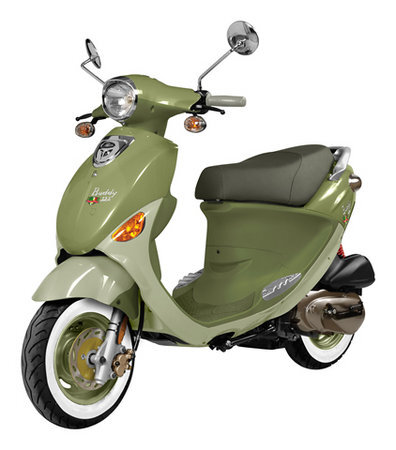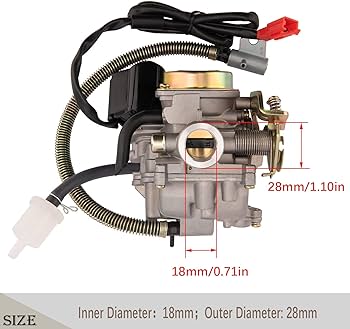A standard moped weighs around 200 to 300 pounds. Moped weights can vary depending on the specific model and manufacturer.
Mopeds are a popular mode of transportation known for their economical fuel consumption and ease of use. These light-weight vehicles typically weigh between 200 to 300 pounds, making them relatively easy to handle and maneuver in urban areas. The weight of a moped can impact its speed, fuel efficiency, and overall performance.
Understanding the weight of a moped is essential for potential buyers, as it directly affects its handling and portability. We will explore the factors that contribute to the weight of a moped and its implications for riders. Whether you are considering purchasing a moped or simply interested in learning more about these versatile vehicles, understanding their weight is crucial.
Contents
Understanding Moped Weight
Mopeds are a popular choice for urban commuting due to their compact size and fuel efficiency. One crucial aspect of mopeds is their weight, which can significantly impact their performance and usability. Understanding the factors that contribute to a moped’s weight and its significance in usage can help riders make informed decisions when choosing a moped.
Significance Of Moped Weight In Usage
The weight of a moped plays a significant role in its maneuverability, stability, and fuel efficiency. A lighter moped is generally easier to handle, making it ideal for navigating through congested urban streets and tight spaces. Moreover, lighter mopeds typically consume less fuel, contributing to cost savings for the rider. On the other hand, heavier mopeds may offer increased stability at higher speeds, but they can be more challenging to maneuver, especially in heavy traffic.
Factors Affecting The Weight Of Mopeds
- Frame Material: The material used to construct the moped’s frame, such as steel, aluminum, or carbon fiber, can significantly impact its weight.
- Engine Size: The size and type of the engine, whether it’s 2-stroke or 4-stroke, contribute to the overall weight of the moped.
- Accessory Options: Additional accessories such as storage compartments, windshields, and luggage racks can add to the weight of the moped.
- Battery Type (for electric mopeds): In the case of electric mopeds, the battery type and capacity influence the overall weight of the vehicle.
How Much Does A Moped Weigh
Mopeds are a popular choice for urban commuting due to their compact size and fuel efficiency. One of the common queries among potential buyers and enthusiasts is, “How much does a moped weigh?” Understanding the weight of a moped is crucial for handling, maneuverability, and transportation. Let’s delve into the specifics of moped weights to provide clarity and insights.
Average Weight Range Of Mopeds
Mopeds typically weigh between 200 to 300 pounds. The weight can vary depending on factors such as engine size, construction materials, and additional features. Lightweight mopeds are often preferred for ease of handling, especially in congested urban areas. However, heavier models may offer better stability and performance in certain scenarios. It’s essential for riders to consider the weight of a moped when making a purchase decision.
Comparison With Motorcycles And Scooters
When comparing the weight of a moped with motorcycles and scooters, there are noticeable distinctions. Mopeds generally weigh less than traditional motorcycles, which can often exceed 500 pounds. On the other hand, when compared to scooters, mopeds may have a similar weight range, but the power and overall build of a moped set it apart as a distinct category of two-wheeled vehicles. Understanding these differences can assist individuals in selecting the most suitable option for their transportation needs.
Moped Weight Components
When considering how much a moped weighs, it’s crucial to understand the various components that contribute to its overall weight. The weight of a moped is influenced by factors such as the frame and chassis, the engine size, and the type of battery used in electric models. By delving into these moped weight components, we can better understand the implications and variations in moped weight.
Frame And Chassis Contributions
The frame and chassis of a moped play a significant role in determining its weight. The materials used in construction, such as steel, aluminum, or carbon fiber, can greatly impact the overall weight of the moped. Additionally, the design and structure of the frame also contribute to the moped’s weight.
Engine Size And Weight Implications
The size and type of engine directly affect the weight of a moped. A larger engine with higher displacement will typically result in increased weight. Two-stroke engines are generally lighter than four-stroke engines, but they may require additional components such as a separate oil reservoir, which can contribute to overall weight.
Importance Of Battery Weight In Electric Models
When considering electric moped models, the weight of the battery is a crucial factor. Lithium-ion batteries, commonly used in electric mopeds, vary in weight based on their capacity and technology. The battery contributes significantly to the overall weight of the electric moped and can influence its handling, performance, and range. Therefore, the selection of an appropriate battery is paramount for electric moped manufacturers to balance performance and weight.
Variations In Moped Models
Moped models vary in weight, depending on their design and features. Lightweight models typically weigh around 200 pounds, while heavier ones can exceed 300 pounds. The weight of a moped can impact its maneuverability and ease of use, making it an important factor to consider when choosing a model.
Impact Of Different Brands And Designs On Weight
When it comes to the weight of a moped, various brands and designs have a significant impact. Different manufacturers utilize diverse materials, technologies, and design elements which directly influence the overall weight of the moped.
Weight Differences In Gas Vs. Electric Mopeds
Gas-powered and electric mopeds have distinctive weight characteristics. Gas mopeds tend to be heavier due to the presence of a combustion engine and fuel tank. On the other hand, electric mopeds are comparatively lighter as they primarily consist of a battery, motor, and minimal mechanical components.
Weighing Your Own Moped
When it comes to owning a moped, one important factor to consider is its weight. Knowing the exact weight of your moped can help you understand its performance, maneuverability, and transportation requirements. In this post, we will guide you on how to accurately measure the weight of your moped.
Step-by-step Guide To Measuring Moped Weight
- 1. Prepare Your Moped: Ensure your moped is cleared of any additional attachments or luggage to obtain an accurate weight measurement.
- 2. Choose the Weighing Location: Select a flat and even surface for accurate results, such as a weight scale or a specialized moped weighing station.
- 3. Position the Moped: Carefully position your moped on the weighing platform without altering its balance or load distribution.
- 4. Record the Weight: Once the moped is stably positioned, record the displayed weight to obtain the exact measurement.
- 5. Calculate the Total Weight: If required, add any additional cargo or attachments’ weight to obtain the total weight of the moped and its contents.
Tools And Equipment Needed For Accurate Results
- 1. Weighing Platform: Utilize a high-quality and accurate weighing platform, preferably designed for moped measurements, to ensure precise and reliable results.
- 2. Measuring Tape: If calculating the total weight, a measuring tape may be required to measure additional cargo dimensions.
- 3. Recording Equipment: Have a pen and paper, or a digital device, to record the obtained weight readings for future reference.
- 4. Assistance (Optional): If necessary, seek assistance while positioning the moped on the weighing platform to ensure safety and accuracy.
Buying With Weight In Mind
How Weight Affects Performance And Handling
When considering buying a moped, it’s important to take the weight into account. The weight of a moped can significantly impact its performance and handling. Heavier mopeds tend to have more stability on the road, especially at higher speeds, while lighter mopeds are easier to maneuver at lower speeds. It’s crucial to find the right balance between weight and performance based on your riding preferences and skills.
Considerations For Transportation And Storage Needs
Aside from performance, the weight of a moped also plays a role in transportation and storage. Heavier mopeds can be challenging to transport, especially if you need to lift them onto a rack or carry them up stairs. On the other hand, lighter mopeds are more manageable in terms of storage and transportation. Considering your storage facilities and transportation methods is crucial when deciding on the weight of a moped.

Credit: www.npr.org
Frequently Asked Questions Of How Much Does A Moped Weigh
How Much Does A Typical Moped Weigh?
A typical moped weighs between 200 to 300 pounds, depending on the make and model. The weight of a moped can vary based on factors such as engine size, materials used in construction, and additional features.
What Is The Impact Of Weight On Moped Performance?
The weight of a moped can significantly affect its performance. Heavier mopeds may have slower acceleration and reduced fuel efficiency, while lighter ones can be more agile and fuel-efficient, providing a better overall riding experience.
How Does The Weight Of A Moped Affect Handling?
The weight of a moped influences its handling characteristics. Lighter mopeds tend to be more maneuverable and responsive, making them easier to navigate through traffic and around tight corners. Heavier mopeds may offer more stability at higher speeds but can be less nimble in urban environments.
Conclusion
Understanding the weight of a moped is crucial for various reasons. From transportation to maintenance and storage, the weight plays a significant role in the overall functionality and convenience. Whether you’re a new rider or a seasoned moped enthusiast, being aware of the weight of your vehicle can enhance your riding experience and ensure safety and practicality.

